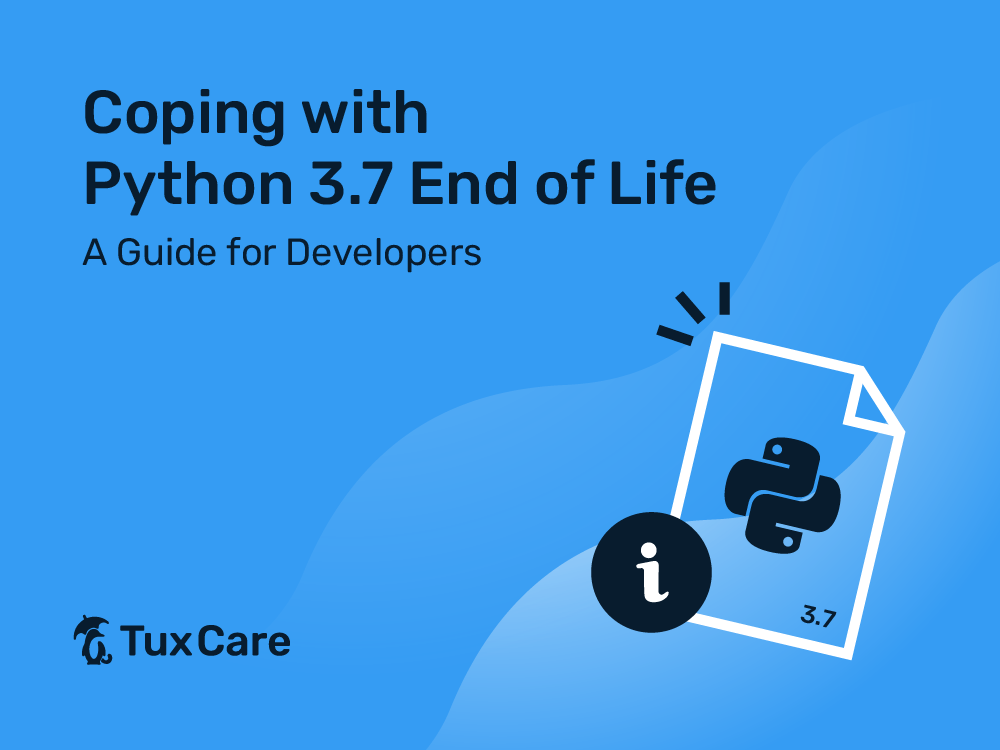Coping with Python 3.7 End of Life: A Guide for Developers
- Python 3.7 reached end of life on June 27, 2023
- The current newest Python major release is Python 3.12
- Running end-of-life software poses compliance risks
Python is one of the most widely used programming languages and has undergone several updates and enhancements over the years. As time passes, the new Python 3.x versions will be released and users need to adapt and keep up with the latest versions. As of June 27, 2023, Python 3.7 has reached its end of life (EOL), marking the end of official support and updates for this version.
In this blog post, we will explore the possible impacts of Python 3.7 end of life and discuss strategies to prepare for a seamless transition to newer versions.
Understanding Python 3.7 End of Life
Python 3.7 was released in June 2018 with numerous improvements and new features. The current stable Python 3 version is 3.12, released in October 2023. As the language evolves, it becomes impractical to continue maintaining the older versions.
With the Python 3.7 end of life, users can no longer receive official bug fixes, security updates, or improvements for this version.
Python’s end-of-life period is set to five years after the initial release date by default. However, it can be modified by the release manager for each branch.
Note: All versions of Python 2 have already reached their end of life.
To ensure the security of Python 2.7 applications, you can utilize TuxCare’s Extended Lifecycle Support for Python 2.7. With its timely security updates, addressing high and critical vulnerabilities, you can continue utilizing your current Python 2.7 software seamlessly on AlmaLinux, Rocky Linux, or Red Hat Enterprise Linux 9.
Impacts of Python 3.7 EOL
Increased Risk of Security Vulnerabilities
The biggest concern after the EOL of software is the lack of security updates. As new Python vulnerabilities emerge, users of Python 3.7 may become more susceptible to potential attacks, putting their systems and data at risk.
Compatibility Problems
Different libraries, frameworks, and third-party packages have dropped support for Python 3.7. This can lead to compatibility issues, making it difficult for developers and users to leverage the latest tools and technologies.
No New Features
The newer Python versions bring new features, performance optimization, and language improvements. Those who continue to use Python 3.7 are missing out on these improvements, which could potentially lower the efficiency and quality of their code.
Compliance Issues
Compliance standards often require organizations to be up to date with security patches to mitigate risks and maintain a secure environment. Running Python 3.7 EOL without security updates may expose your system to new vulnerabilities, raising concerns about compliance.
Strategies for Dealing with Python 3.7 End of Life
If you are still using Python 3.7, now you should understand that it’s time to stop using it and shift to the newer supported versions. Upgrading to versions like Python 3.9, 3.10, 3.11, or the most recent release is the most effective and straightforward solution to ensure security updates.
However, it is essential to test the migration before upgrading to check if your Python 3.7 applications are working correctly without any issues.
Identify Dependencies
It is essential to identify and update dependencies, including libraries, frameworks, and tools to ensure the codebase remains compatible with a new Python version.
Test Carefully
Perform comprehensive testing after switching to a new Python version. This includes unit tests, integration tests, and system tests to detect any issues introduced by the upgrade.
Use Automated Tools
Utilize tools and services that facilitate the migration process. For example, some tools can automatically identify deprecated features and suggest alternatives, making the transition smoother.
Seek Professional Expertise
If the project is complex or you don’t have the necessary expertise, consider getting professional help. Python development experts can offer guidance and support throughout the migration process.
Final Thoughts
Although Python 3.7 was the most used Python 3 version, its EOL highlights how important it is to keep up with current versions. The impacts of Python 3.7 end of life, such as compatibility problems and security risks, underscore the need for a proactive approach. By following the recommended practices and the latest Python versions, developers can ensure the longevity, security, and efficiency of their projects.



 Documentation
Documentation Login
Login




